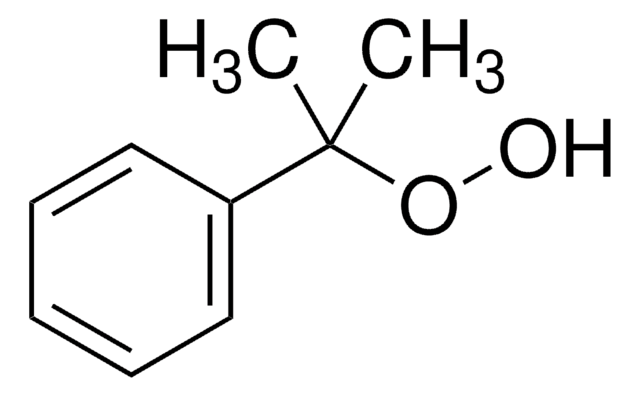41690
4,N,N-Trimethylaniline
catalyst grade (for peroxide polymerization), ≥98.5% (GC)
Synonym(s):
4-Dimethylaminotoluene, N,N-Dimethyl-p-toluidine
About This Item
Recommended Products
grade
catalyst grade (for peroxide polymerization)
Quality Level
vapor density
>1 (vs air)
assay
≥98.5% (GC)
form
liquid
expl. lim.
7 %
refractive index
n20/D 1.546 (lit.)
n20/D 1.547
bp
211 °C (lit.)
90-92 °C/10 mmHg (lit.)
density
0.936 g/mL at 20 °C
0.937 g/mL at 25 °C (lit.)
functional group
amine
SMILES string
CN(C)c1ccc(C)cc1
InChI
1S/C9H13N/c1-8-4-6-9(7-5-8)10(2)3/h4-7H,1-3H3
InChI key
GYVGXEWAOAAJEU-UHFFFAOYSA-N
Looking for similar products? Visit Product Comparison Guide
Related Categories
General description
Application
- Charge-transfer complexes for redox polymerization: 4,N,N-Trimethylaniline used for on-demand amine/peroxide redox polymerization. This research offers a new perspective on the use of 4,N,N-Trimethylaniline in creating controlled polymer structures, which is crucial for various industrial and pharmaceutical applications (Garra et al., 2018).
Caution
signalword
Danger
Hazard Classifications
Acute Tox. 2 Inhalation - Acute Tox. 3 Dermal - Acute Tox. 3 Oral - Aquatic Chronic 3 - Carc. 1B - Repr. 2 - Skin Sens. 1 - STOT RE 2 Oral
target_organs
Reproductive organs
Storage Class
6.1A - Combustible acute toxic Cat. 1 and 2 / very toxic hazardous materials
wgk_germany
WGK 3
flash_point_f
168.8 °F - closed cup
flash_point_c
76 °C - closed cup
ppe
Eyeshields, Faceshields, Gloves, type ABEK (EN14387) respirator filter
Choose from one of the most recent versions:
Already Own This Product?
Find documentation for the products that you have recently purchased in the Document Library.
Our team of scientists has experience in all areas of research including Life Science, Material Science, Chemical Synthesis, Chromatography, Analytical and many others.
Contact Technical Service









